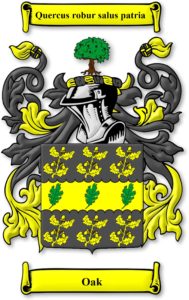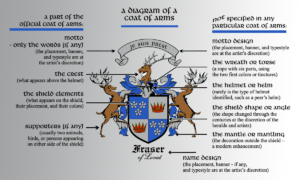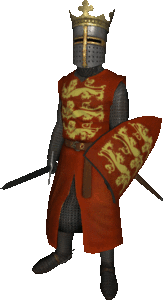A number of years ago, a six page document came into my hands. Alas, but I do not recall the four ‘W’s and ‘H'(who, what , where, when and how.) Titled,”Historical and Biographical Sketch of The Oak(e)-Oaks-Oakes Family,” these tattered, forlorn pages became lost in my hodgepodge of important items to keep and sort out on another day. That day finally came. But, my recent discovery of this document was insignificant to me now as I already knew and shared the names and dates it contained. Also, a large portion of it was about folks who were not in my decendancial lineage. Coming to the last paragraph at the end of page five, I was surprised to read, “Robert A. Oakes was born in Tenn. in 1831.” Now I know why I have so many aches and pains, I am 187 years old!
The last page, which was in the worst condition of the six, held the key to finding our family Coat of Arms. It contained a concise, but detailed, verbal description of our Coat of Arms, which reads as follows:
COAT OF ARMS
SABLE ON A FESSE ENGRAILED BETWEEN SIX SLIPS OF OAK FRUCTED OR, THREE OAK LEAVES VERT.
Explanation of the above coat:
Sable – black, denotes constancy and sometimes but most rarely, grief.
Fesse – a band borne in the center of the shield is the military belt or girdle of honor.
Or – gold or yellow, denotes generosity and elevation of mind.
Vert – green signifies hope, joy and sometimes loyalty in love.
Oak Tree – holds first place amongst trees and is said to signify antiquity and strength.
The crest is: AN OAK TREE PPR. FRUCTED OR, ENCIRCLED WITH TORSE.
The motto is: ‘QUERCUS ROBUR SALUS PATRIAE.’
(Special note: the often used terminology, ‘Family Crest’ in place of ‘Coat of Arms’, is quite incorrect as we shall see later.)
Although there is an explanation of terms given, several words were not included(perhaps at it’s writing, these were common knowledge,) so I will provide a more complete explaining. The ‘fesse’ was a broad, horizontal band across the shield which signified that the bearer must always be in readiness to act for the well-being of the people. It was to occupy approximately one-third of the shield. ‘Engrailed’ indicates the fesse was indented along the edges with small curves. The word ‘fructed’ simply means bearing fruit. The ‘fruit’ of an oak tree of course being acorns. Therefore, the Coat of Arms description in modern language would become, “BLACK ON A BROAD HORIZONTAL BAND INDENTED ALONG THE EDGES WITH SMALL CURVES AND CONTAINING THREE GREEN OAK LEAVES, BETWEEN SIX GOLDEN SLIPS OF OAK LEAVES WITH ACORNS.”
The crest is the device on top of the helm or helmet. Crest is from the Latin word ‘crista’, meaning tuft or plume. Typical crests were animal feathers or a horsehair brush, as was used by the ancient Roman army officers. Under the crest was a ‘torse’ or wreath of twisted cloth. So, now you can see how wrong it would be to say ‘Family Crest.’ The crest description stated, ‘An oak tree ppr. fructed or.’ Ppr. represented the word ‘proper’ which had the meaning ‘in the natural colors,’ which would be green leaves and brown trunk with golden acorns.
Lastly comes the motto, “Quercus robur salus patriae”, which everyone knows is Latin for “The strength of the oak is the safety of our country.” When I finished translating and understanding(to a point) the written description of the coat of arms, I was then able to know what I was looking for as I searched for the visual representation of our Coat of Arms. I found a match on a heraldry website and here it is for your viewing pleasure.
I also found a generic illustration that I thought was helpful. It further explains the different parts of a Coat of Arms.

If you are like me, then you probably have wondered, why was a coat of arms necessary? Well, imagine a knight dressed in his suit of armor sitting atop his mighty steed. Who is this fellow, friend or foe? So, they decided to display their unique coat of arms on their shield and their tunic for easy identification. Great idea, except be sure not to hold the shield upside down.